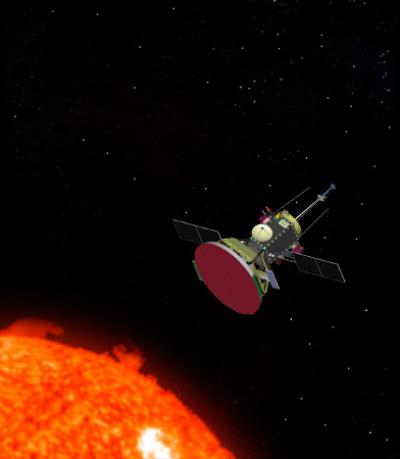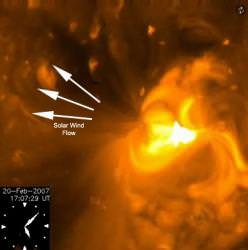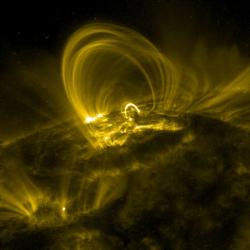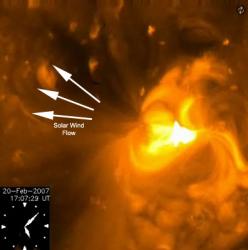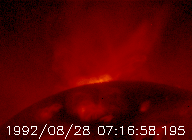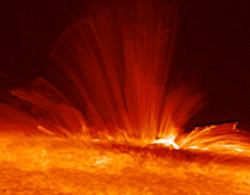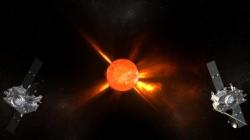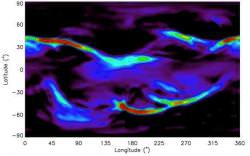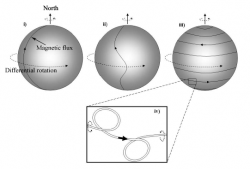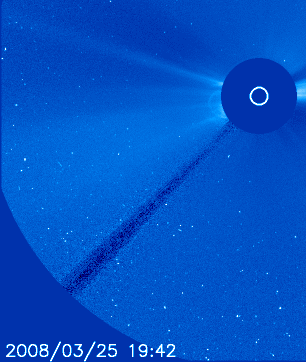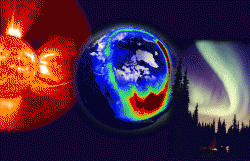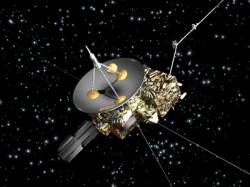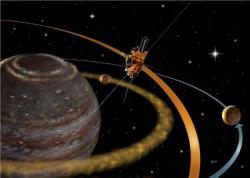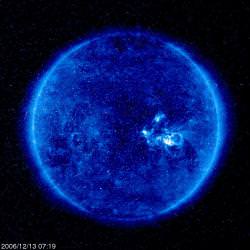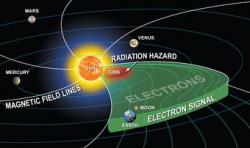A mission to the sun is difficult stuff. For 30 years scientists and engineers have struggled with developing a spacecraft that could survive the harsh environment close to the sun, but always ended up running into insurmountable technology limitations or blowing the top off the budget. But now the Applied Physics Lab believes they have come up with a plan that will work, and NASA has given them the go-ahead to get a mission ready by 2015. And contrary to the old joke about a mission to the sun, the new Solar Probe won’t have an easy time of it by just heading to the sun at night!
The Solar Probe mission will come within 6.6 million kilometers (4.1 million miles) of the sun to study the streams of charged particles the sun hurls into space. The spacecraft will actually be within the sun’s corona — its outer atmosphere — where the solar wind is produced. At closest approach the Solar Probe will zip past the sun at 210 km (125 miles) per second, protected by a carbon-composite heat shield able to withstand up to 1425 degrees Celsius (2,600 degrees Fahrenheit) and survive blasts of radiation and energized dust at levels not experienced by any previous spacecraft.
The spacecraft will weigh about 1,000 pounds. Preliminary designs include a 2.7 meter (9 feet) diameter, 15 centimeter (6 inches) -thick, carbon-foam-filled solar shield atop the spacecraft body, similar to APL’s MESSENGER spacecraft.
The probe will be solar powered (no problem there!) with two sets of solar arrays that will retract or extend as the spacecraft swings toward or away from the sun during several loops around the inner solar system, making sure the panels stay at proper temperatures and power levels. At its closest passes the spacecraft must survive solar intensity more than 500 times what spacecraft experience while orbiting Earth.
“Solar Probe is a true mission of exploration,” says Dr. Robert Decker, Solar Probe project scientist at APL. “For example, the spacecraft will go close enough to the sun to watch the solar wind speed up from subsonic to supersonic, and it will fly though the birthplace of the highest energy solar particles. And, as with all missions of discovery, Solar Probe is likely to raise more questions than it answers.”
Solar Probe will use seven Venus flybys over nearly seven years to gradually shrink its orbit around the sun, coming as close as 4.1 million miles to the sun, about eight times closer than any spacecraft has come before.
The main goals of the Solar Probe are to determine the structure and dynamics of the sun’s magnetic field, trace the flow of energy that heats the corona and accelerates the solar wind, and explore dusty plasma near the sun and its influence on solar wind and energetic particle formation. This mission will also help us learn more about the sun-Earth relationship.
Original News Source: Eureka Alert

